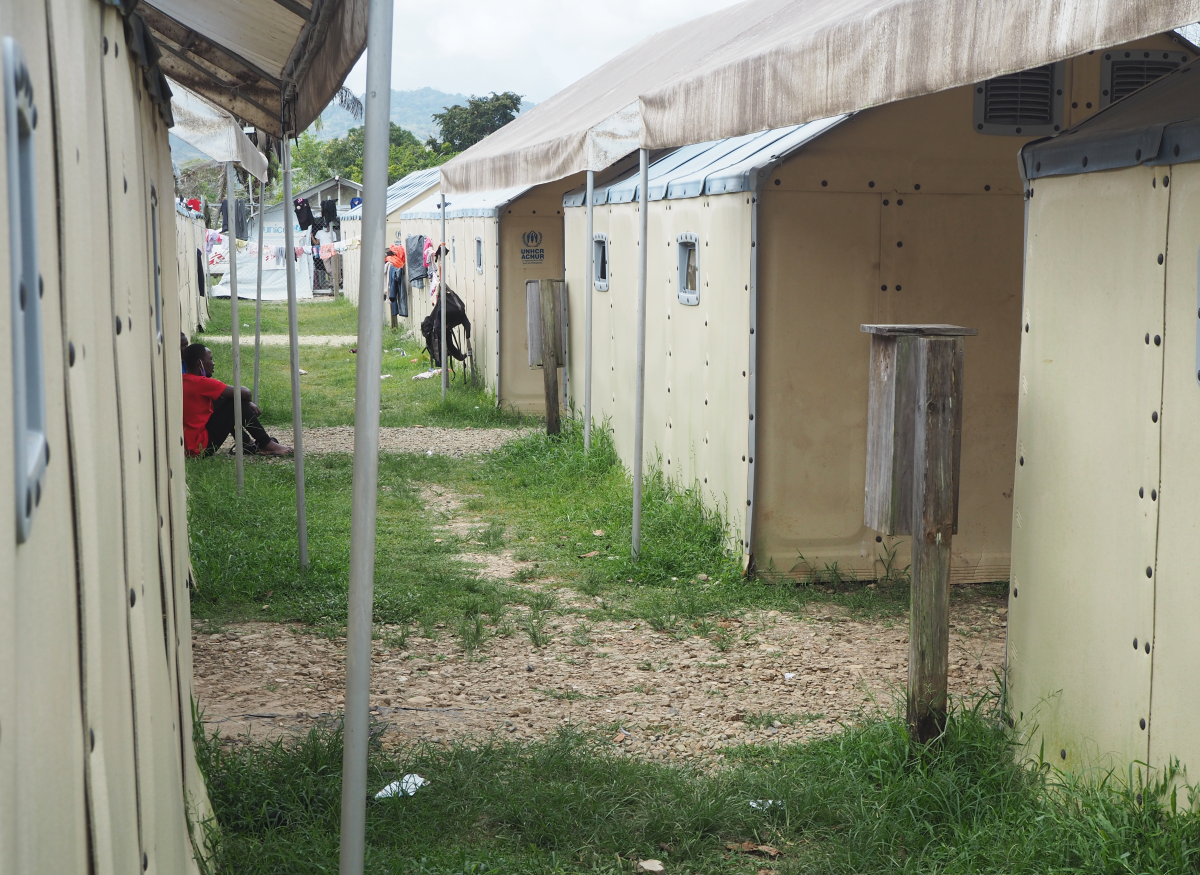Many often wonder how so many ordinary people could have embraced the authoritarian ideas of fascist leaders in the past. Department of English Assistant Professor Alexander Menrisky points out that this is part of the often hard-to-define nature of fascism, which many political theorists say is less about ideology and more about how existing cultural ideas get weaponized toward ethnonationalist goals.
This point is increasingly important for environmentalists as some figures on the radical right - including the shooter who killed 10 Black people at a Buffalo, New York supermarket in May - increasingly brand themselves ecofascists, joining environmentalism and white supremacy by contending that only whites deserve access to resources.
Menrisky studies how environmentalism becomes a matter of personal and communal identity in sometimes surprising ways. For example, in his first book, Wild Abandon: American Literature and the Identity Politics of Ecology, he traced how the American New Left and counterculture of the 1960s and 1970s came to view ecology as a matter of psychology. Now, he’s turned his attention to ecofascism and, more specifically, how and why many ordinary people, in the face of climate change, buy into reactionary, racist ideas masquerading as environmentalism—often without even realizing it.
These ideas have a tendency to creep into everyday life. Many people repeat them and therefore normalize them, not only deflecting discussion from actual, entrenched causes of the climate crisis but also providing fodder for overtly white supremacist manifestos written by murderers like the Buffalo shooter. From news hosts claiming littering or pollution is exclusively caused by “immigrants”, to politicians pointing fingers at the emissions of other countries to justify climate inaction in the U.S., to late-night tv hosts welcoming population collapse, these ideas are pervasive and widespread.
Menrisky met with UConn Today to talk about what ecofascism is, how it spreads, and what we can do to counter it.
Q: What is ecofascism?
Broadly defined, ecofascism is any environmentalism that advocates or accepts violence and does so in a way that reinforces existing systems of inequality or targets certain people while leaving others untouched. It is basically environmentalism that suggests that certain people are naturally and exclusively entitled to control and enjoy environmental resources. Some types of people, in other words, are “native species” and others are “invasive.”
The term itself is still very much up for debate but gathering currency largely due to high-profile individuals who have explicitly identified themselves as ecofascist. An example includes the man who murdered 51 People in a Christchurch, New Zealand, mosque in 2019. The El Paso, Texas, shooter, also in 2019, did not refer to himself as an ecofascist, but he plagiarized the Christchurch shooter’s manifesto, including many of its bogus arguments about race, nation, and environment. More recently, as you mentioned, another young man drove several hours to Buffalo, New York, where he targeted Black grocery shoppers.
A common ecofascist argument, then, links national environment to population, contending that certain (often specifically nonwhite) populations, within the US or beyond it, are the primary cause of climate change and other environmental issues.
The problem with this logic is that far and away, the United States is responsible for the highest per capita greenhouse gas emissions on the planet. In reality, greenhouse gas emissions don't care about geopolitical borders. The factors that most drive them are consequences of vast transnational systems of resource extraction, consumption, and waste disposal, the benefits of which most often flow to populations in the global north.
These arguments about population are often implicitly about how the speaker doesn't want to acknowledge the economic arrangements that benefit them while contributing to rapid ecological changes, leading them to demonize the people who do and will continue to suffer the most from those changes (and have also, generally speaking, contributed the least to the problem).
Other familiar ecofascist ideas include misanthropic statements that the world would be better without humans, which not only leaves open the possibility that it might be ethically permissible for mass numbers of humans to die (a popular suggestion early on during the COVID-19 pandemic) but also opens the door for eugenic arguments among explicit ecofascists about which humans deserve to live and which do not. Given that it is typically able-bodied, white, Anglo-Saxon, cisgendered heterosexual men who explicitly declare themselves ecofascists, the answer is often unsurprising.
All of these shooters identified themselves, if not as ecofascists, then explicitly as white supremacists with an environmental angle. They very, very rarely draw on real data. Their screeds are mostly self-referential: they just copy or recycle from white-supremacist comments online or the latest version of racial “replacement theory,” which argues, first, that race is a stable, essential feature of people and nations, and that nonwhite populations are not only growing but conspiring to drive white people to extinction. That was precisely the argument made by the Buffalo shooter.
Q: What causes ecofascist arguments to spread?
Many commentators often relegate ecofascism to a marginal, extremist group of people, but the fact is that the conditions for them to think the way that they do are already in our culture, and that's the tougher problem.
Extreme figures do communicate in online forums where they share ideas and try to recruit others, especially young men worried about the climate crisis, as much of today’s younger generations are. That worry is very understandable, and part of the reason why seemingly innocuous versions of these arguments are able to spread, even though there's very little data to back them up.
That notion that humans, in general, are a disease on the planet, for example, it’s a very old idea among environmentalists, especially, and typically, the speaker means to exempt themselves. It’s also an idea that not only fuels white-supremacist environmentalism today, but also has its roots in early US conservationist figures that well-intentioned environmentalists often forget or don’t realize were themselves white supremacists. Coming to terms with and moving beyond that history is the first step in establishing responses to ecological crisis that not only value human as well as nonhuman life, but also don’t limit the idea of “the natural” or “the human” to certain classes of people.
What makes these arguments most concerning, in other words, is that they increasingly circulate on the left and among political moderates at the center as well as on the right. This is how fascism has worked historically. Fascist movements are rarely ideologically rigorous. Instead, they draw on commonplace, existing ideas about national, ethnic, racial, and environmental belonging that reinforce lines between in-groups and out-groups. That is one of the reasons why otherwise well-intentioned environmentalists risk reiterating ecofascist arguments.
Q: What can we do about these ideas spreading?
It is important to be able to recognize typical ecofascist talking points or myths because then you can start to recognize where they are popping up in everyday scenarios, talk about them openly, address their misconceptions and clarify their consequences, and deliberate over actual, alternative solutions.
The aim is to debunk widely circulating myths that lend support to explicitly ecofascist activities. Take, for example, the common assumption that humans are naturally, tragically selfish. Not only does this sort of claim encourage an us-versus-them mentality that demonizes others while reserving resources for those who largely already have access to them, but also discounts millennia of human cooperation when it comes to the sustainable maintenance of resources, in the Americas alone. When you start putting pressure on certain points, those arguments fall apart.
I was recently part of a group of educators from universities across the country who created a web zine that we hope will help teachers and students to do that. It’s called Against the Ecofascist Creep, and it breaks down several common myths that often appear in everyday media and conversation in the form of six short essays written in plain language. It uses the storyline from the Marvel Cinematic Universe’s Avengers: Infinity War and Endgame, two of the highest-grossing and, today, most familiar films of all time. The villain Thanos’s motivation in the films is to wipe out half the universe’s population to conserve resources for the other half. It is a neatly distilled ecofascist story.
Unfortunately, despite the fact that Marvel casts Thanos as the villain, the franchise did not address his environmental concerns, which were very real. As a result, after Infinity War came out, numerous people online agreed with Thanos and his ideas. That's a great example of how everyday people embrace ecofascist arguments. Rather than just saying, “Thanos is a run-of-the-mill bad guy. Let's just defeat him and go on with business as usual,” the zine explores his assumptions and presents other ways of dealing with environmental challenges than advocating violence. It also offers questions for discussion and resources for further reading and community action.
Talk to younger people, students, our own children, and anyone else you hear making these arguments. My bet is that people will increasingly make them as the effects of climate change get worse.
Myth #1: Overpopulation is the root cause of climate change and other environmental problems.
Reality: The population growth rate is in decline, from 2.2% per year 50 years ago to 1.0% per year. The wealthiest 10% of the world’s population emits 50% of the greenhouse gases whereas the poorest 50% emit less than 7%. The root problem is not necessarily population. It is specific patterns of resource extraction, consumption, and distribution.
Myth #2: Humans are inherently selfish and will deplete resources unless they are consolidated.
Reality: Humans have sustainably managed resources for millennia. Resource depletion is a function of particular cultural norms, economic systems, and patterns of overconsumption that have chiefly benefitted those who have consolidated control of those resources to begin with.
Myth #3: Humans are like a disease on the planet. Disasters and pandemics are nature’s revenge.
Reality: A small proportion of the human population is responsible for a major share of greenhouse gas emissions, and stands to suffer least from their global consequences. “Another common ecofascist talking point is that any human death is good because it means fewer people consuming things and contributing to environmental degradation,” Menrisky says. But blaming “all humans” ignores these massive disparities.



